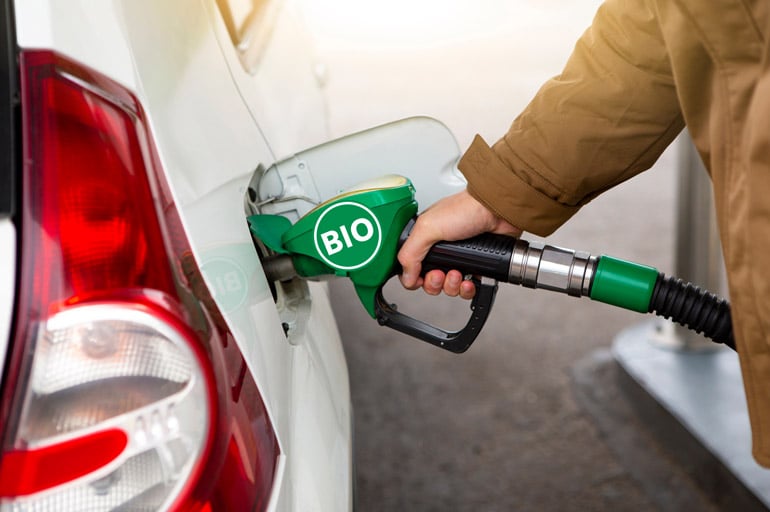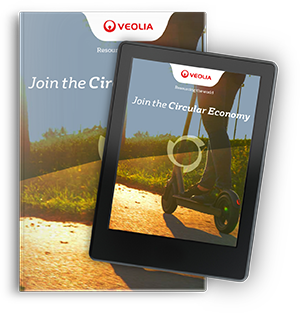With mounting economic, social, and regulatory pressure, the search for alternatives to petroleum-based fuels is intensifying. The path forward is in developing sustainable, renewable energy sources that have minimal impact on the environment.
The search for green energy has produced a number of clean diesel fuels that offer the same or better performance than traditional petroleum diesel, each with their strengths and weaknesses. We take a look at two interesting alternatives to petroleum-based fuels: biodiesel and renewable diesel.
Renewable diesel vs. biodiesel: what’s the difference?
Both biodiesel and renewable diesel fuels are produced from vegetable oils, greases, or animal fats and are derived primarily from agricultural waste products. The benefit is that they are not reliant on fossil fuels, and their production processes use existing resources as feedstock that would otherwise have been disposed of, creating a circular resource loop.
By utilizing agricultural byproducts, producers create a circular system whereby the waste from one process is put to productive use in another. Although they’re both derived from the same or similar feedstocks, these two fuels have two different production processes that produce two very different types of end products.
- Biodiesel – Also known as fatty acid methyl ester or FAME, biodiesel is created through a method called transesterification. This process purifies the oils and fats which are then blended with petroleum diesel at a 5% to 20% ratio.
- Renewable diesel or green diesel – Also known as hydrotreated vegetable oil or HVO, is produced using a method called hydrotreating, which involves hydrogenating triglycerides (fats) to remove metals and compounds containing nitrogen and oxygen.
Let’s use automobiles as an example to compare the difference to what this means. If you used biodiesel as automotive fuel, it would have both a short shelf life and could cause engine issues. If you used renewable diesel, however, you’d have a cleaner, higher quality fuel that runs more efficiently.

How these fuels affect the environment
Generally, when comparing these alternative fuels, people tend to focus on the production processes. We just saw with biodiesel and renewable diesel that production processes can produce very different products. These fuels are both referred to as clean diesel fuel because of their distinct features, but require different types of infrastructure and affect the environment in different ways.
One of the main issues with biodiesel is that transesterification (converting fats contained in oils into biodiesel) introduces oxygen into the fuel. That oxygen causes problems with the fuel’s freezing temperature, separation during storage, algae growth, and increased emissions. These factors must be taken into account when storing and burning the fuel.
Biodiesel used in automobiles, trucks, and other non road engines emits more pollution into the environment than renewable diesel powered engines. Plus, biodiesel has shown to produce higher levels of nitrogen oxide (NOx), which can cause smog and acid rain.
Renewable diesel, on the other hand, does not contain any oxygen, meaning users do not have to worry about the storage and temperature issues associated with biodiesel. Even more important is that, due to hydrogenation, renewable diesel burns cleaner than both biodiesel and fossil fuel-based diesel.
How do we use these two fuels to power our existing engines?
Renewable diesel can be substituted with fossil diesel in existing vehicles because it is chemically identical to fossil diesel. This means that renewable diesel can operate efficiently in any vehicle that uses diesel fuel.
Biodiesel, however, must be blended with fossil diesel in relatively low concentrations or you risk damaging plastic and rubber parts in fuel systems and causing carbon and contaminant buildup in our existing engines.
Which is the cleaner choice, biodiesel or renewable?
While both alternative fuels are cleaner than petroleum diesel, based on what we have seen so far, the choice is clear.
Renewable diesel isn’t just the cleaner choice, it’s also the higher performing choice.
- Can be used in 100% concentration
- Runs smoothly and efficiently in all vehicles that use diesel fuel
- Does not require upgrades on existing refinery equipment to produce this fuel
- Higher cetane number of over 70, meaning it is cleaner burning and delivers more power to the engine
Biodiesel, although a sustainable alternative to petroleum diesel, still falls short of renewable diesel.
- Must be blended, meaning the highest concentration allowed is 20%, with 80% being traditional diesel.
- Risk of damage to existing diesel engines
- Produces higher levels of NOx emissions
- Lower cetane number: 50-60
In the light that saying one fuel is cleaner than the other, we hope to uncover ways to get the best of both worlds. To offset the less “clean” production process, there are infrastructure improvements you can make to reduce carbon impact while producing the superior product, renewable diesel.

The choice for sustainable diesel is simple
Our entire economy and society are in the middle of the long shift toward more circular, resource conscious, and environmentally responsible energy solutions.
Renewable diesel fuel enables American energy producers to use their current equipment and join the circular energy transition without huge expenditures required to replace existing infrastructure.
When compared to biodiesel, renewable diesel is a higher quality end product that provides greater power and efficiency, produces fewer harmful emissions, and can be created, stored, and used by existing infrastructure. Renewable diesel can be implemented right away with minimal or no changes to current refineries or vehicles, all of which is good news for our burgeoning circular economy.



